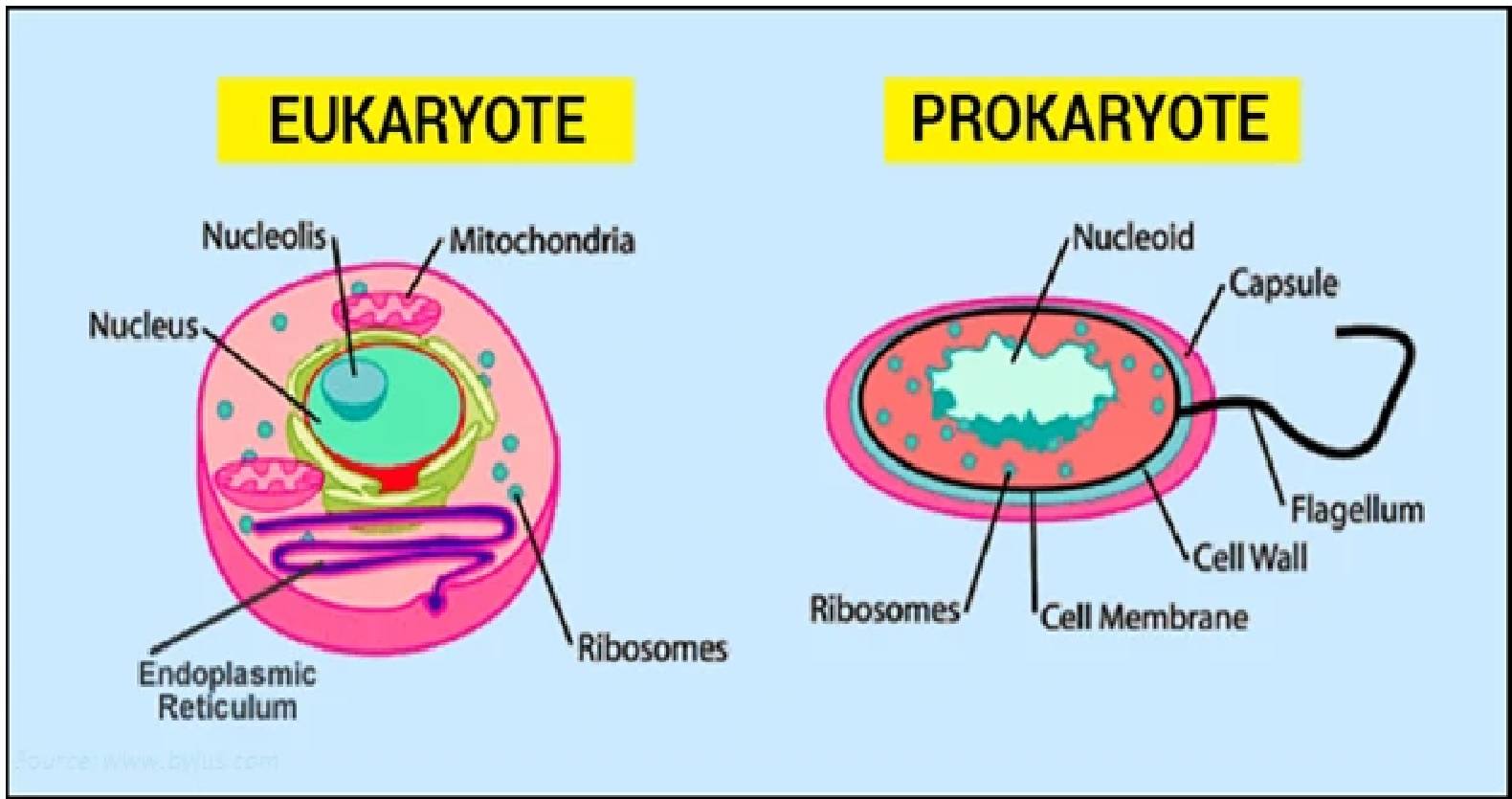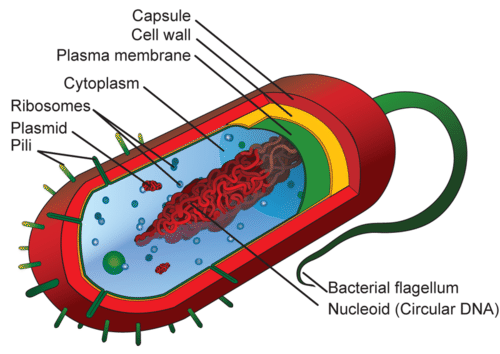Prokaryotic cells dont have a nucleus that contains their genetic material as eukaryotic cells do instead they have a nucleoid region which is an irregular-shaped region that contains the cells DNA. 2 Prokaryotes have only a plasma cell membrane.

Prokaryotic Cell Vs Eukaryotic Cell By Nadiadaniela Eukaryotic Cell Prokaryotic Cell Prokaryotes
These cells carry out many of these DNA functions in a special spot called.
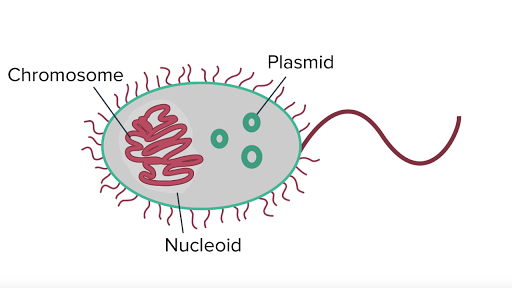
O PROKARYOTES HAVE A NUCLEUS. A prokaryotic cell is a simple single-celled unicellular organism that lacks a nucleus or any other membrane-bound organelle. Instead prokaryotic cells have a nucleoid region which is an irregularly-shaped region that contains the cells DNA and is not surrounded by a nuclear envelope. Bacteria and archaea are two major branches of prokaryotes.
Prokaryotes have no DNA. They have ribosomes and cytoplasmic satellite DNA and cytoskeleton but lack membrane-bound organelles such as plastids and mitochondria. Though they do not have a nucleus prokaryotic cells still store their genes on chromosomes and still regulate their DNA.
On the other side eukaryotic organisms may be unicellular or multicellular. Prokaryotes lack a membrane-bound nucleus and membrane-bound organelles which eukaryotes have. Prokaryotes are organisms made up of cells that lack a cell nucleus or any membrane-encased organelles.
Prokaryotic DNA is found in the central part of the cell. A piece of circular double-stranded DNA located in an area of the cell called the nucleoid. Having no separate sexes bacteria reproduce asexually.
Prokaryotes pro-KAR-ee-ot-es are unicellular organisms that dont have a membrane-bound nucleus and other organelles. Eukaryotes have an extensive internal membrane system. Prokaryotes have no nucleus.
On the flip side eukaryotes have a true membrane-bounded nucleus and genetic material is embedded in it. O Prokaryotes have genetic material prokaryotes do not. Most prokaryotes have a cell wall outside the plasma membrane.
This means the genetic material DNA in prokaryotes is not bound within a nucleus. Prokaryotes are organisms that consist of a single prokaryotic cell. Look up Wikipedia articles Cell Nucleus and Nucleolus an organelle within the nucleus and you may learn the big difference.
Also they do not have organelles bound with membranes. Prokaryotic organisms are more often unicellular and very rarely multi-cellular. Prokaryotic cells do not have a nucleus.
They range from 10100 μm in diameter and their DNA is contained within a membrane-bound nucleus. Prokaryotic organisms are always unicellular. Prokaryotes do not have a nucleus.
However they have 70S small ribosomes in the cytoplasm. No prokaryotes do not have a primitive form of nucleus If anything prokaryotes bacteria may have a nucleoid nucleus-like circular DNA. Prokaryotes have no nucleus and the genetic material DNA is less organized in chromatin and chromosomes than it is in eukaryote unicellulars.
O Eukaryotes lack a membrane-bound nucleus and membrane-bound organelles which prokaryotes have. Therefore they do not have a nucleus but instead generally have a single chromosome. E3radg8 and 1 more users found this answer helpful.
Eukaryotic cells are found in plants animals fungi and protists. Prokaryotic cells are not as complex as eukaryotic cells. Eukaryotes are organisms containing eukaryotic cells.
Why is protein synthesis different in prokaryotes and eukaryotes. Five differences between prokaryotes and eukaryotes are as follows. Prokaryotes have no ribosomes.
They have no true nucleus as the DNA is not contained within a membrane or separated from the rest of the cell but is coiled up in a region of the cytoplasm called the nucleoid. Prokaryotic organisms have varying cell shapes. A darkened region called the nucleoid Figure 1.
Prokaryotes have no proteins. Prokaryotes are unicellular organisms that lack organelles or other internal membrane-bound structures. Prokaryotic cells do not have a true nucleus that contains their genetic material as eukaryotic cells do.
Rather they have a membraneless nucleoid region open part of the cell that holds free-floating DNA according to. 1 Prokaryotes do not have a well-defined nucleus but eukaryotes have a nucleus marked off from the rest of the cell by a double membrane. Prokaryotes are without a true nucleus ie genetic material is embedded in the cytoplasm in the center of the cell.
Prokaryotic cells tend to be small simple cells measuring around 01-5 μm in diameter. Eukaryotes have a nucleus and prokaryotes have a nucleoid. We will shortly come to see that this is significantly different in eukaryotes.

Prokaryotic And Eukaryotic Cells Are Similar In Several Ways Prokaryotes Eukaryotic Cell Prokaryotic Cell
Prokaryotic And Eukaryotic Cells Science Quiz Quizizz

Prokaryotic Cell Structure And Function And Cells Prokaryotic Cell Cell Structure Bacterial Cell Structure

Here We Have A Prokariotic Cell And Its Characteristics From The Inside To The Outside Of It This Is Eukaryotic Cell Prokaryotic Cell Prokaryotic Cell Model
Prokaryote Structure Article Khan Academy
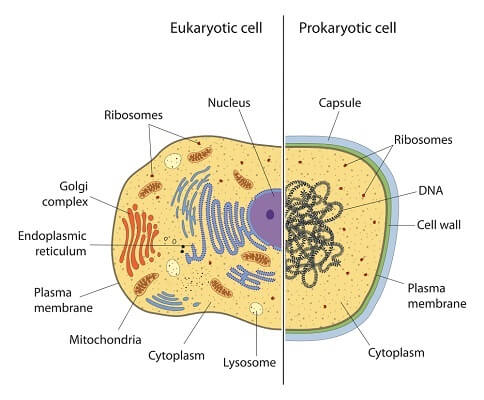
Prokaryotic Cell Definition Examples Structure Biology Dictionary

Prokaryotes And Eukaryotes Biology For Non Majors I

Biology 101 Cells Prokaryotic Cell Eukaryotic Cell Prokaryotic Cell Model

Scientists Create First Computer Simulation Of A Complete Organism Engadget Prokaryotic Cell Cell Structure Prokaryotic Cell Model

Unique Characteristics Of Prokaryotic Cells General Microbiology Biol 455 Openstax Cnx
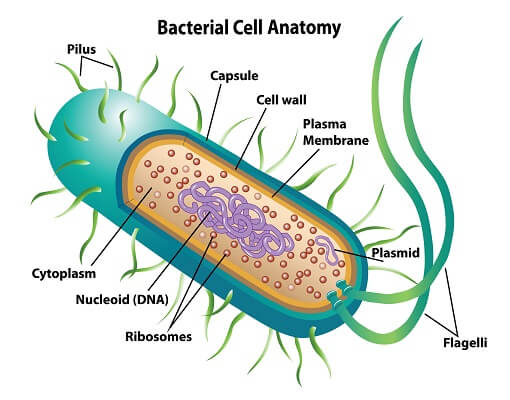
Prokaryotic Cell Definition Examples Structure Biology Dictionary
Which May Or May Not Have A Cell Wall A Eukaryote Or A Prokaryote Quora

Prokaryotic Cell Structure A Visual Guide Eukaryotic Cell Prokaryotic Cell Prokaryotes

Which Of The Following Statements Is Incorrect Regarding Prokaryotic Cells Lifeder English
Prokaryotic And Eukaryotic Cells Ck 12 Foundation
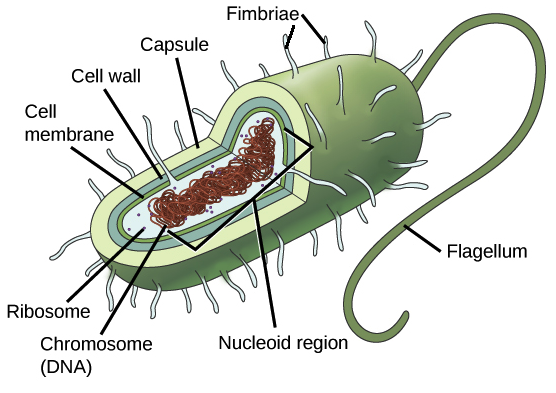
Prokaryotic Cells Article Cells Khan Academy
Are Prokaryotes More Complex Than Eukaryotic Cells Quora
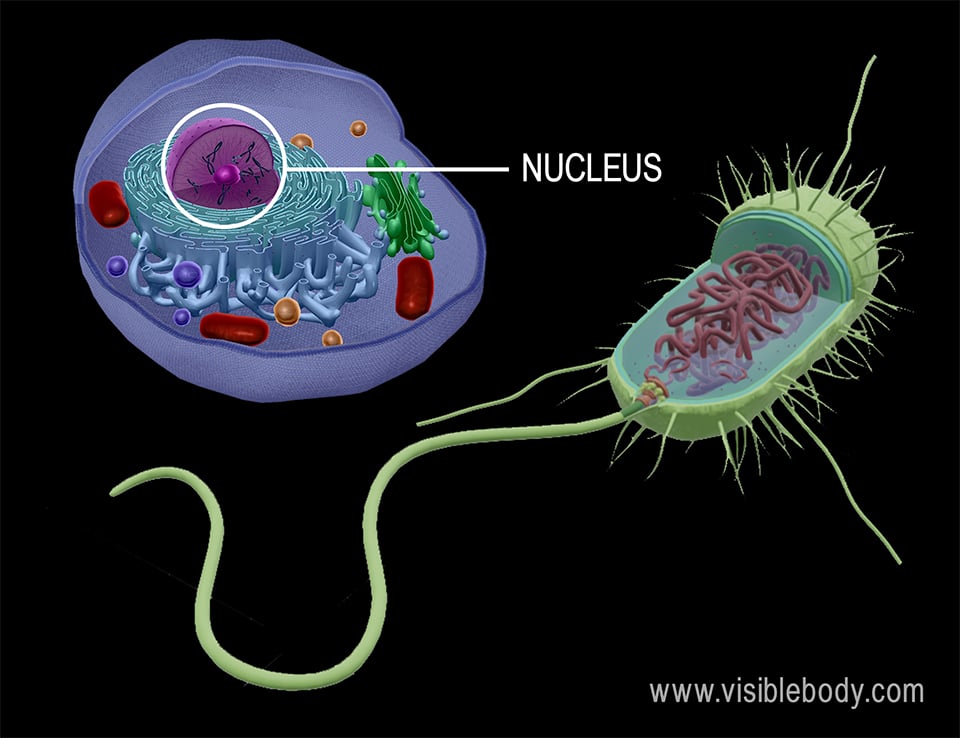
Eukaryotic Vs Prokaryotic Chromosomes

